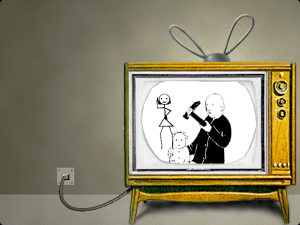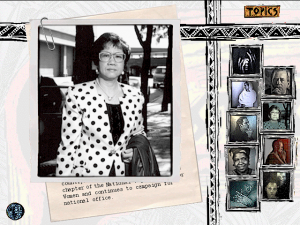Bob Stein on the Voyager Company, transitional multimedia, and the long outlook on information 

Named in the spirit of the famous space probes sent into unknown territory, The Voyager Company was the first and perhaps most notable group to experiment with multimedia and software as new ways of presenting content. Though best remembered as the company that created the Criterion Collection, Voyager’s sensibility for expanding and contextualizing media saw its greatest expression in the company’s line of CD-ROM products. From 1989 to 1997, Voyager released dozens of titles that used audio, video, and interactivity to enhance existing works, tell compelling stories on significant topics, and create original art in an uncharted format.
That a media publisher on the bleeding edge folded isn’t unexpected, but their work is still surprising and unique two decades later. Shades of Voyager can be found everywhere from DVD special features to interactive web presentations. Much of their output, unfortunately, has never been reproduced in other formats – a shame both for the value of that content and for historical purposes.
For Bob Stein, co-founder and creative brains behind the Voyager Company, the CD-ROM was just one step in an ongoing exploration of the digital, collaborative future of information. He is currently co-director of the Institute for the Future of the Book, where he continues this advocacy work. Stein was kind enough to talk with me about the mission and legacy of the Voyager Company and its CD-ROM library. We touched on Voyager’s explorations beyond print, convincing people to take a chance on new media, and how CD-ROMs and virtual reality reflect the evolving role of authorship.
The Obscuritory: [The Voyager Company] started in the 80s. You started with floppy disks and LaserDiscs and so forth, you expanded into CD-ROMs. Eventually, I know you did some web stuff by the end. I’m wondering – from the outset, was there a unifying philosophy behind it? What was Voyager meant to accomplish and stand for, broadly speaking?
Bob Stein: The whole enterprise was really about exploring how expression would change with the affordances of all the new technologies.
So it was about multimedia and exploring that format specifically, what was now available.
Yeah. I mean, it was pretty clear by 1980 that the print era was about to come to an end. Now, “about” means something that takes place over, you know, decades. But I was in a position where I could start exploring, and that was what I wanted to do.

“The locus of intellectual discourse for hundreds of years was in print, and that was about to change.”
What Voyager was doing with that kind of exploration was still pretty new and unexpected. You were kind of the first ones to jump onboard with [multimedia]. And I know you started doing things with LaserDiscs and film editions, but it wasn’t quite film, and it wasn’t quite in the realm of software, or publishing, so I wonder: when you started, was there any sort of industry that you saw yourself reflected in, or was this kind of a total lark as far as who else you could look to and who else existed in the same line of work?
Well, I came out of the book world, and I felt that what we were doing was… whatever the book was, we wanted to play a role in inventing whatever came next. When you look at Criterion’s original logo, it was a book turning into a disc. So very consciously, we were trying to understand what would be the [next thing]. In the sense that books… the locus of intellectual discourse for hundreds of years was in print, and it was very clear to me in 1980 that that was about to change. And so that was what the driving force was.
I think we probably said in [the] very early 80s – what we said was, we wanted to be the Random House of tomorrow.
You started [out] doing things with floppy disks, but starting in ’89, when you did Beethoven’s Ninth Symphony, that was your first foray into CD-ROMs, and that was really, really early for the format. I spoke in the past with Joe Sparks, who did some other multimedia CD-ROM stuff, and he said that even in ’91, it was a really hard sell to get people interested in CD-ROMs. So I wonder, what was the decision in jumping into that format so early when the adoption was so low and it was still such a new thing that it might not have been viable yet?
I think I thought it was viable, which is why I did it. One of the things I think I’ve had a knack for is understanding both when a technology is ready – is just good enough to do something with – and what to do with it. And so, I had already had the idea of the Beethoven CD-ROM that we started with. I already had that idea several years earlier before CD-ROMs even existed. And so when CD-ROMs came along, I realized, “Oh, we could actually do this now.” And so we did, and we sold millions and millions and millions of dollars worth. So it was, commercially, very viable.
So the CD-ROM, was that more of a storage – I know because that was obviously the big leap, was having access to storage and all the audio tracks – was there something different about the format at the time when you jumped into the CD-ROM compared to doing it on floppy or LaserDisc? Was there anything particular about the format that interested you?
You could put a symphony on there. [laughs] You couldn’t do that with a floppy disk. Yes, it was entirely about being a large storage medium.
You’ve talked in the past about the importance of getting a diversity of ideas in the lineup of Voyager. How did you go about attempting to achieve that? Because you had a huge array of different types of titles in the Voyager collection, but what were you looking for, and how did you seek out that content to ensure that you had a diverse lineup of material?
I don’t think we set out to be diverse. That’s more the way my brain works.
There were two roots into a project at Voyager. One was where the content was really important and needed to be out there. You could argue that Beethoven’s Ninth Symphony or Who Built America? fall into that category. Then there were other projects where the interest wasn’t primarily in the content but in the exploration of the form. I would say something like Laurie Anderson’s Puppet Motel was more about exploring new forms of expression than about a new way of making important content available.
When you were doing the CD-ROM content, a lot of it, I imagine, was collaborative. When you’re adapting existing work, like when you were doing Maus, I imagine you had to work a lot with the original artists, but as well as when you’re doing something original like Cinema Volta, or even something like Planetary Taxi, I imagine those were cases where you had to collaborate more directly with the artist. I’m wondering, since this was such a new format, what the extent was to which they knew what the medium could do, what the limitations were, and how much it was a collaborative process with those artists.
I think it was different. One of the best – well, everything that was good was a serious collaboration, but I think that in most cases, where the content was what we were after, then it was the case of my having to convince the artist or the content holder that it was worth their time to explore a new way of presenting the content. An example would be the Macbeth we did – it was one of the best things we actually ever did – where it took me a year to convince the professors who we worked with that this was a valuable and useful collaboration. Or Pedro Meyer, who we did I Photograph to Remember with, where Pedro was showing me a bunch of photographs, and I said to him, “You know, we could publish these in a new way,” and we went and did I Photograph to Remember.
Some[thing] like Cinema Volta, though, frankly, was a different situation. Their artist showed me something he had done, and I said, “This is cool, let’s publish it,” and so there wasn’t much collaboration. Silly Noisy House with Peggy Weil was a huge amount of collaboration. Peggy wanted to do something, and we spent a long time juggling ideas back and forth until we came up with what we made.
So, you know, I think that one of the reasons that Voyager’s oeuvre – I apologize for the pretentious word – but one of the reasons why it was interesting was because we didn’t have a cookie-cutter-approach. We basically took each project in its own right and tried to understand: what can we bring to the table, if anything.
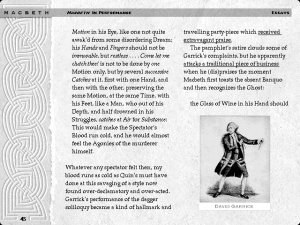
“It took me a year to convince the professors who we worked with that this was a valuable and useful collaboration.”
It sounds like in a lot of those cases, it was times where you approached the artist or, in talking with them, that subject came up. I imagine that at the start, early on in the days of CD-ROM, it was a little harder sell. But as it went on, did you ever find yourself in cases where people would come up, approaching you, saying, “This is how we can adapt this to multimedia” as opposed to going to them and saying “Can we do this”? Did that ever happen at any point, where it kind of shifted towards them approaching you with interest in multimedia instead?
Yeah. I mean, I think there was a small period where I remember both Philip Glass and Steve Reich came to us and said, “I’d really like to do something with you.” But in general, what happened… there are two categories. So famous people like that would come, and our answers would almost always be the same, which was: “Yeah, we could do something, but you’d have to get it funded just like you get all your work funded,” which is, some philanthropic entity is gonna have to put up a lot of money. And that sort of rarely happened.
Sometimes artists would come to us – unknown artists with ideas – and if they were an artist who could also code, then we could do something with them. If they were an artist who just had an idea and they needed us to assemble a team around them, that was almost invariably too expensive. So I’m sure there are some, but there were not a lot of huge successes that just sort of came in off the street.
That dovetails into a question I had about the financial success of the Voyager Company. Voyager had some publishing struggles. There was the [low] adoption rate for CD-ROM earlier on, and as it went on, even when the format was getting more popular–
Oh, CD-ROMs were… from the beginning, I think we understood it was a transitional medium. This was not a shocker when the Internet came along and replaced CD-ROM at sort of the center of what people were interested in exploring. Voyager’s problems were peculiar to Voyager. It wasn’t so much that we strategically had a failed outlook. It was that it was a very complex partnership, especially towards the end when the [von Holzbrinck’s] were involved, and it just wasn’t possible for the five partners to agree on a way forward. But there was no… it’s not like we thought it was CD-ROMs and figured that was it. We didn’t. That was never our understanding.
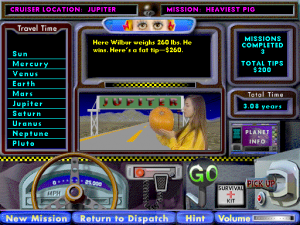
“This was not a shocker when the Internet came along and replaced CD-ROM at sort of the center of what people were interested in exploring.”
The other question I had in that realm was related to the content of [the CD-ROMs], that the idea of having these sort of art object-y – or I’ve seen someone in a old publication describe them as being “coffee-table book” type CD-ROMs and multimedia – that it seemed like there might not have been an appetite for them. Did you sense there was, at any point, market resistance toward that type of content, or was it just those sort of circumstantial elements that made it difficult to sell?
Interesting question. You know, CD-ROMs… they had their strengths, and they had their weaknesses. I would probably venture to say that they were never going to become… they were never going to be a home run in the sense of the way the book was a home run. It lasted for hundreds of years. That was never gonna be the case with CD-ROMs. We were practicing as much as anything else. We were trying to experiment with, you know, “Let’s take this puppy out on the road and see what she can do!” And in the main, we could sell enough copies to pay for our experiments.
It always has seemed like sort of a transitional medium like that.
We weren’t… yeah. And it’s interesting: so here we are, twenty years later, and we still can’t really do on the Internet what we could do on the CD-ROM. I mean, you can, but nobody does, because it’s too hard still. But we’ll get there, and it’s gonna be much better when it’s on the Internet than it ever was on a CD-ROM, I think mostly because it’s gonna be connected. It’s gonna be part of a web of knowledge and information and exploration, and it’s all gonna be in a social context.
The big shift that’s taking place is that the consumption of media is moving from something you do by yourself to something you do socially. Not necessarily synchronously, it can be asynchronous. But we’re still years away.
I had another question relating to that, with CD-ROMs and their strengths versus where digital information is now. And I think one of the strong points of that medium was they were these discrete, authored experiences where the form of it mattered a lot, where the presentation of it and how it was structured. Like Amnesty Interactive was one that the way [the information] was presented mattered a whole lot. And I wonder now – with the current digital information climate, that it’s much more about how it’s consumed and transformed and things like the Semantic Web – I wonder, is there room for that sort of discrete, contained experience going forward? Is that thing that could be viable in the future, or is it becoming much more networked and much less of an authored type experience?
Authorial, curatorial, editorial… I don’t think anything is any good if it doesn’t have a point of view. But you can make things that are top-down with a point of view, and you can make things that are more network-y with a point of view. I think, pretty clearly, that the role of the author is changing. Instead of, if you think of the classroom or the lecture with somebody in the front raining wisdom down upon an audience, those days are probably, in the main, on their way out. It doesn’t mean, though, that there isn’t a role for an author. It’s just that the author has to learn how to be more of a collaborator – a seminar leader, as it were – as opposed to a lecturer.
And these roles don’t change overnight. These take perhaps many, many, many decades to change. But also, the substrate is changing. In other words, if you think about the difference between print media – and just for argument’s sake, I’ll include movies as print, in effect, because of the sequential presentation and frames – but if you look at something like VR, which is surely coming, it’s no longer linear in the same way. It may be linear in terms of time, but in a properly complex VR piece, the gaze of the reader is not directed in quite the same way by the author. There may be ten things going on, each of which can be attended to by the reader, and so the reader is constantly making a decision about where she’s going to look.
Now, this is going to require a completely different kind of author. Or a different example: I think that authors are increasingly putting stuff up on the web with the expectation that their readers are going to be able to engage with them, right there on the page. And this also, again, changes the role of the author. Instead of the author’s role ending when the “book” goes into publication, in many ways, the author’s role just gets started when the stuff starts to come out because of the requirement and the value of interaction, over time, between readers and authors, et cetera.
I guess what Voyager did – and especially with CD-ROM content – it seems like it was sort of a middle step to that. I know on a lot of the CD-ROMs, you have listed, specifically, authors for [them], but it also wasn’t quite a linear experience. There were different ways to interact. So is that still – like you said, that was the middle step in–
I think the way to look at Criterion or Voyager is: essentially, all we were doing was expanding the notion of the page to include audio, video, and very light interaction. That was the multimedia phase. And I would say that now, some other experiments are going on. We’re experimenting with what happens when readers can congregate on the page, and we’re also now, with VR, starting to experiment with what happens when there is no fixed point of view on the page any longer. And these are huge changes, and they will take quite a long time to work their way out.
Gutenberg perfects the printing press in 1454, but it’s not until fifty years later that somebody figures out page numbers would be helpful – or forty years. Or, you know, the printing press perfected in 1454; Don Quixote, regarded as the first novel, doesn’t get published for 150 years. It takes humans quite a while to work out what new media are really good for, and I would say we are incredibly early in this. It could easily be another 20, 30, 50 years before something really establishes itself as the book of the future.
Looking long-term like that, there was a quote I saw that you had that I actually thought was really funny, when you compared Voyager to Random House’s Pantheon imprint, where you said “long on influence, short on sales.” Which seems totally fair, reasonable, because Voyager did set the standard for multimedia at the time. But especially as we go towards things like VR, [in] fifty or forty years, the specific domain it occupied – the multimedia domain – seems like it’s regressing further into memory as things fall out of compatibility and they fall into disuse and end up on shelves.
And so I wonder, I guess, within that timespan, after a time passes when we start to see what the successor is to how information is presented and contained now, what – if any – legacy Voyager, you think, would have, looking back as far as the nature of information, if there’s… what place that sort of multimedia CD-ROM era occupies in there.
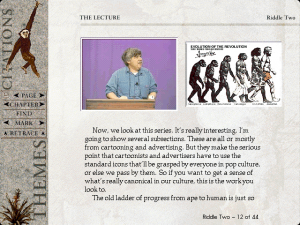
“It takes humans quite a while to work out what new media are really good for, and I would say we are incredibly early in this.”
Well, there are two ways. I mean… We did stuff. It influenced people. I’m sure that if somebody wanted to, a hundred years from now, they could go back and trace the DNA of various things. I don’t know that this is 100% true, but I do know that I showed Jeff Bezos the first electronic book in 1992, and fifteen years later, we get the Kindle. Do I think Jeff was very interested in what I showed him? Absolutely. And I’m not saying he ripped us off in the least. I’m just saying that the role that… in other words, I get letters from kids who say that, “I played with something when I was eight years old, and now I’m at Google.” And so maybe that kid will make something really important. So anyway, there’s a lot of soft stuff. You never know, right?
The only other thing is that it would be fantastic if somebody, like you, decided to write a really serious book about – I think, actually, it would make sense to do it about Voyager and Criterion – and to make that a multimedia book which included video examples of everything. That, to me, is what’s unfortunate, is that there’s no way for kids in school today to study some of this stuff and to learn lessons from it. There’s the work at MIT’s Media Lab in the late ’70s, early ’80s that really informs all of this. I mean, you don’t have Voyager if you don’t have the MIT Arc Mac [Architecture Machine Group] lab. And if I show people demos from the Arc Mac lab that are now 45 years old, there’s still things we don’t have. [Nicholas] Negroponte was ahead of where we are now, 45 years ago, and that stuff is basically hidden from sight.
So I would say that historians are doing a terrible job. But, of course, not everything has to be accounted for. The influence is still out there.
I’ll tell you, there’s a wonderful Criterion story, where… who were the guys who made Menace II Society? [types] Oh, the Hughes brothers. We put it in the Criterion Collection, and when we were making the commentary track with them, one of the stories they told was that they didn’t go to film school. They said, “Everything we ever learned about filmmaking we learned by listening to the commentary tracks on Criterion LaserDiscs, and that when we were making the film, we would joke with each other, and we would sort of pretend we were doing a commentary track while we’re making the the film.” So you hear a story like that, and you realize that that was a significant one-to-one influence of work we did that showed up later on without any attribution whatsoever. Again, I’m not complaining about the lack of attribution, I’m just trying to point out that influence… tracking influence is very difficult. You just have to assume at some point that, if you sold hundreds of thousands of things, that they must have had some influence.
I’m [a recent] information science graduate right now, and I’m just starting to see, you know, maybe there is interest in looking at the influence this type of thing has had and the line between what Beethoven’s Ninth was up to annotated e-books and kind of that… missing link era, I guess. I’m not sure if it’s totally fair to call Voyager a missing link, but that it tends to be glossed over, at least in information science circles looking at how the use of information has changed. It tends to be sort of forgotten.
It’s an interesting problem. Voyager tends to be overlooked in almost every survey, and the problem is because we didn’t really fit into anybody’s category. Librarians didn’t really pay much attention. The computer world never cared. Hollywood never really cared. We touched all these industries, but because we weren’t central to any of them and didn’t really ally with any of them in particular, we were in fact always an outlier. …you know, shit happens.


